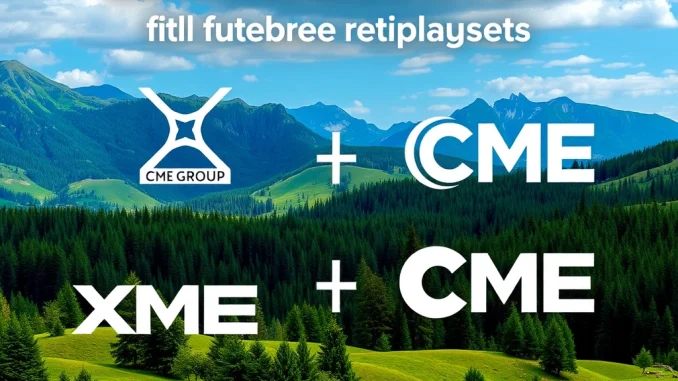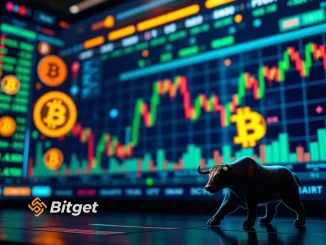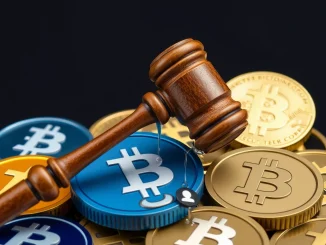
Get ready, crypto traders! A significant development has just hit the market: the launch of CME XRP futures. The Chicago Mercantile Exchange (CME), one of the world’s leading derivatives marketplaces, has officially introduced futures contracts for XRP, the digital asset associated with Ripple.
What Does the CME XRP Futures Launch Entail?
According to reports citing sources like Cointelegraph and JinSe Finance, the CME began offering these new contracts on May 19. This move expands CME’s existing suite of cryptocurrency derivative products, previously focused on Bitcoin and Ether.
The newly available XRP futures contracts come in two distinct sizes, designed to cater to a range of market participants:
- Micro Contracts: Sized at 2,500 XRP per contract. These smaller contracts offer more flexibility and potentially lower capital requirements, making them accessible to a broader base of traders.
- Standard Contracts: Sized at 50,000 XRP per contract. These larger contracts are more aligned with institutional trading volumes and strategies.
The introduction of these varied sizes suggests CME aims to capture interest from both sophisticated individual traders and large financial institutions looking to gain exposure to XRP price movements without holding the underlying asset.
Why is XRP Futures Trading on CME Significant?
The launch of XRP futures trading on a platform as prominent as CME is a notable event for several reasons:
- Institutional Validation: CME is a highly regulated and respected financial institution. Offering XRP futures on its platform lends a degree of legitimacy and maturity to the XRP market in the eyes of traditional finance.
- Increased Liquidity: Futures markets can significantly increase liquidity for an asset. By providing a regulated venue for price discovery and trading, CME can attract substantial trading volume.
- Risk Management Tools: Futures contracts are essential tools for hedging. Businesses or individuals with significant XRP holdings can use futures to lock in prices and mitigate the risk of adverse price movements.
- Market Access: The CME platform provides a familiar and accessible gateway for large financial players who might be hesitant to trade on native crypto exchanges.
Understanding XRP Derivatives
Futures contracts are a type of derivative, meaning their value is derived from an underlying asset – in this case, XRP. When you trade an XRP futures contract, you are not buying or selling actual XRP. Instead, you are entering into an agreement to buy or sell XRP at a predetermined price on a specific future date.
This allows traders to speculate on the future price direction of XRP. If a trader believes the price will rise, they might buy a futures contract (go long). If they believe the price will fall, they might sell a futures contract (go short). The profit or loss is the difference between the agreed-upon price and the actual price at settlement.
The introduction of these contracts on CME expands the ecosystem of XRP derivatives available to global traders, offering regulated options alongside existing offerings on other platforms.
How Can You Potentially Trade XRP Futures?
Accessing and being able to trade XRP futures on CME typically requires an account with a brokerage that has clearing privileges on the exchange. This process is generally geared towards institutional clients and sophisticated traders who meet specific eligibility requirements, including capital thresholds and trading experience.
For retail traders, access might be indirect, possibly through regulated brokers offering access to CME products, though direct access can be complex.
Comparing with Other CME Crypto Futures
CME is not new to the crypto space. It was one of the first major regulated exchanges to launch Bitcoin futures in late 2017, followed by Ether futures. The addition of XRP to its lineup signifies a growing acceptance and demand for regulated trading products across a wider range of prominent cryptocurrencies.
The structure of the XRP contracts (micro and standard sizes) mirrors the approach CME has taken with its Bitcoin and Ether offerings, indicating a standardized framework for its crypto derivative products.
Benefits and Considerations
The launch presents several potential benefits:
- Enhanced price discovery for XRP.
- New strategies for hedging and speculation.
- Increased institutional participation in the XRP market.
However, traders should also consider:
- Futures trading involves leverage and significant risk.
- Market volatility can lead to substantial losses.
- Understanding the mechanics of futures contracts is crucial.
Conclusion: A Step Forward for XRP in Traditional Finance
The official launch of CME XRP futures marks a pivotal moment for XRP’s integration into traditional financial markets. By providing regulated futures contracts, CME is opening doors for institutional capital and offering sophisticated tools for hedging and speculation on XRP’s price. This move enhances the landscape of XRP derivatives and positions XRP alongside Bitcoin and Ether on a major global exchange. While futures trading carries inherent risks, this development is a significant step in the ongoing maturation and institutional adoption of the cryptocurrency market, potentially impacting future XRP futures trading activity worldwide.



